How to Become a Professional Welder & How Much You Can Make
Last Updated on
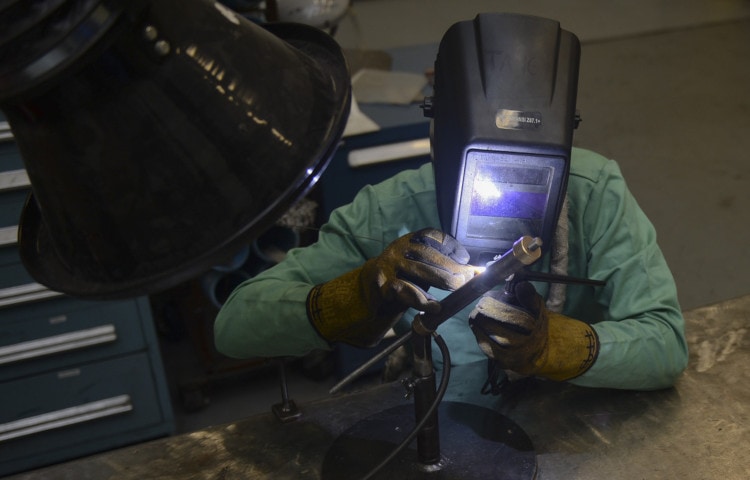
Imagine blazing around with a constant flow of electrical current passing through your fingertips, to join what was once separate pieces of metal into the chassis of a race car. Welding: this is my kind of job.
The typical American welder earns $54,000 per year and loves their job. Welding is certainly not for everyone, but if you’re not afraid of a little heat, enjoy getting your hands dirty, and are keen to create things that affect communities in every corner of the world, it’s a great career choice for you.
There are few jobs as easy to get into (no degree necessary) that pay so well while providing such a broad spectrum of opportunities. From white-coated men in a clean factory TIG welding pharmaceutical tanks, to fearless women hanging off a bridge stitching up a strengthening brace, to a water-loving adolescent making a fortune underwater welding, the range is vast. But how do you get into this valuable trade?
Research On Becoming a Professional Welder
If you’re genuinely interested in learning how to become a professional welder, you’re starting at the right place. To begin a career welding, the first step is to research it. I walked into a welding position accidentally, without welding knowledge, by stumbling upon a company that thought I was a welder. Seven years later, it’s paid off for me significantly, but it took way more of a toll than it should have due to lack of initial knowledge.
If you want to dive into the world of welding successfully, learning the overall basics of what options there are and what’s involved will help ensure you’re fast-tracked into the best position for you.
To begin with, learn about the different welding industries and the materials they use. There are three primary metals a welder fabricates (welds). Some people become all-around welders gaining experience in every field, but the most successful specialize in one area.
Welding Materials
1. Steel Welding
This is the broadest field. It’s the easiest to get into, and has the most opportunities by far. Every kind of welding discipline is used in this field. It tends to be dirtier work, and you will find a wide range of welders in it, from highly experienced professionals to farmers in the boondocks putting up a fence.
- See also: Does Welding Weaken Steel?
2. Stainless Welding
Stainless welding is a bit more specialized. It’s a harder metal to weld, but when mastered, it’s agreed to be the most satisfying material to work with by those who conquer it. There are no shortcuts welding stainless, which is why it’s difficult. Either you weld it correctly and it turns out amazing, or you weld it incorrectly and it becomes a terrible mess. There is ample work out there for good stainless welders, but it’s a harder field to get into.
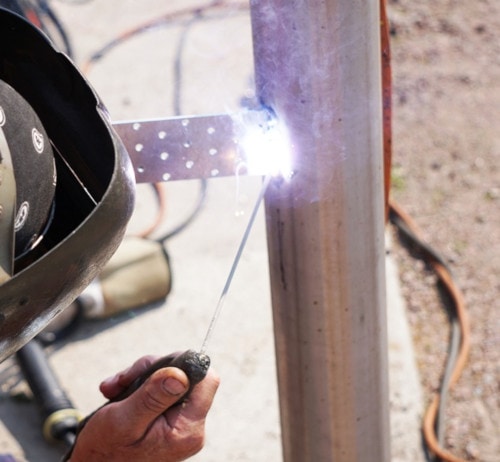
3. Aluminum Welding
This is another more specialized field. It’s considered the most challenging type of welding, but I am convinced that is only because it’s less common, and so different from steel and stainless welding. With a bit of practice, it can be picked up just as quickly as any other kind of welding. Most western cities need aluminum welders, but there are fewer jobs out there for them.
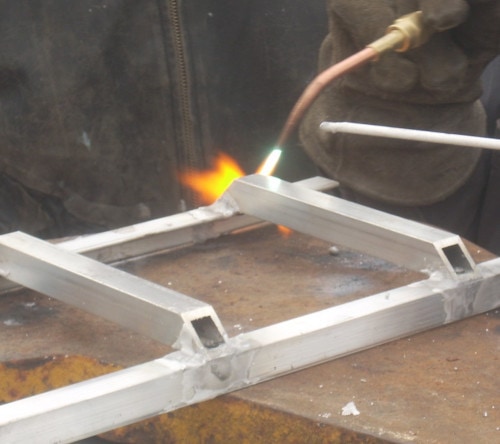
4. Other Materials
There are other materials people weld, like cast iron, plastic, and different types of alloys, but this is the smallest field of welders. Most people, except plastic welders, start with other kinds of metal and learn their particular alloy or cast-iron welding alongside it.
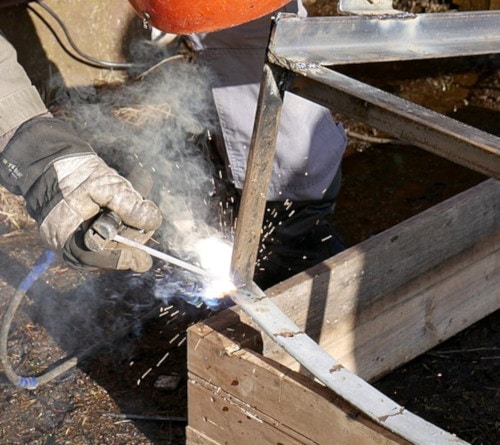
Start Learning Specifics
Once you figure out what type of metal you want to work with, begin learning how you weld it. The more you learn, the better. There is an endless amount that can be learned, but it’s most important to understand the different ways the material is welded and why. This is called the welding discipline.
There are three main disciplines: MIG, TIG, and SMAW (otherwise known as arc or stick welding). There are also some less common disciplines, like friction, gas, and gasless MIG, along with some other more specialized types we won’t go into.
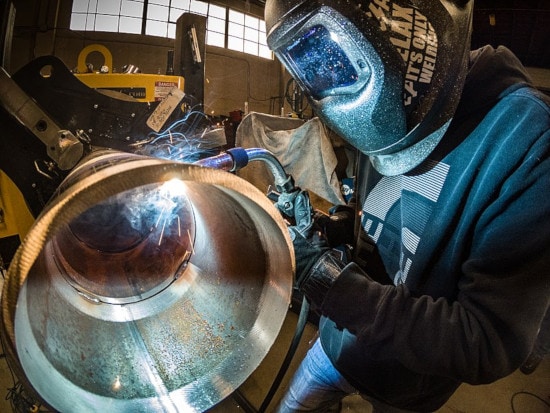
Steel is welded in every discipline. MIG, TIG, and stick are the most common, but there is no type of welding steel is exempt from. Stainless and aluminum, on the other hand, are mainly MIG- and TIG-welded, whereas other alloys are typically gas-welded.
After learning the basics around the material you want to weld, start learning the details of one major discipline, say, MIG welding for steel (the most common steel welding) or TIG welding for stainless (most people’s favorite stainless welding). Learn how it’s performed and familiarize yourself with the principles, the process, and the terminology around that kind of welding.
Learning these fundamentals will help ensure you’re prepared for gaining practical experience. If you plan to study welding at a training center, this will still be beneficial before starting the course, to ensure you’re heading in the right direction before you fork out money to study. You will be thankful for the head start if you still decide to commit. As stated, there is no end to learning about welding, so the more you learn early on, the more successful you will be.
Practical Experience
All the theory you learn pre-welding will help you significantly, but it will not do what hands-on experience does. Before jumping in, though, take note that welding is hazardous. You may have watched someone welding in such a way that it looks as safe as baking. Remember that they most likely are welding on a foundation of vast knowledge and experience.
Burns, arc eye, and electrocution are common occurrences in the welding world, especially for beginners. Don’t dive on in and think you will come away unharmed. Be cautious and only begin welding with someone else around who is experienced.
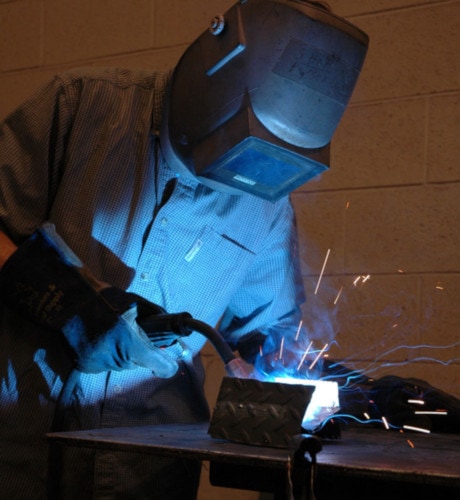
Although the principles of welding are black and white and not too tricky to learn, the outworking of manual welding is a unique skill requiring development. It is based upon the feeling, sound, and sight of the welding process, which is not something picked up overnight. Along with having someone around for safety, when you find yourself a way to get experience, have someone to either watch or inspect afterward to give you advice on what’s right or wrong.
A weld can be deceiving to inexperienced eyes. A lousy weld can look very similar to a good weld, with only a slight difference in outward appearance. The internal quality of a weld, which is what counts for strength, is invisible to the eye and can only be determined by an experienced welder’s perception. Make sure someone who welds well can critique you.
Practice
Once you get a bit of experience, you will start getting the hang of it. The time it takes differs from person to person, ranging from a full day welding, to a few weeks straight. But just because you can do a few consistent welds that look as nice as the work of the professionals who helped you does not mean you’re now a good welder. It is relatively easy to achieve consistent quality welds, but there are various types of welding positions, different material thicknesses, and a range of conditions you will perform them in.
All of them require different skills and further insight, and some of them take a while to grasp. They require different wire thicknesses, different welder settings, adjustments with gas, welding speed, and pre-welding preparations. Spend as many hours as you can practicing as much diversity as possible within your specific field to become well-rounded to perform on the job.
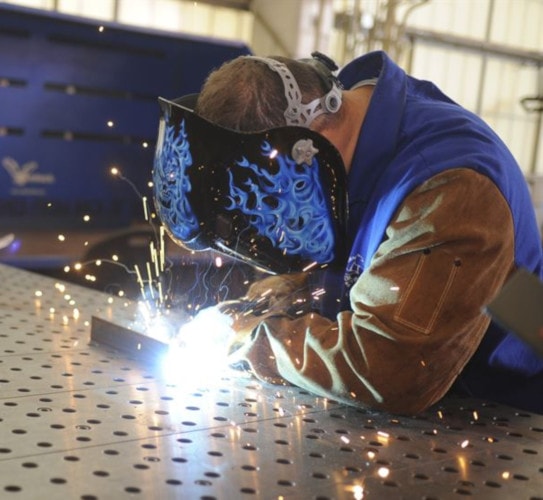
First Job
Once you gain some knowledge and experience, there are two main ways to get your first welding job.
1. Start as a lackey
Your location will help determine how viable this is. I am from New Zealand, so walking into a job without experience is relatively easy, making this a great place to start. Most workshops have a few young people who clean up and do basic tasks around the shop. This is ideal for someone looking for a welding position without experience. You can be breathing in all that a welding shop does while you develop your own skills on your lunch break, after work, or with basic paid jobs they start giving you.
2. Start as an apprentice
To start as an apprentice requires more experience. It’s usually a position that only people with prior training from a welding course can get. It’s the most common and easiest way to get into welding. It costs for the initial training, but it usually secures a stable future by giving you the necessary qualifications to work anywhere around the world.
Certifications
Certifications are an essential part of your career once you have work, or even before you get a job if you’re struggling to find employment. The type of welding you’re doing and the country you are in will determine which certification is necessary. Some types of welding do not require certification, but almost all companies will favor a potential employee who is certified.
We also wrote a guide on how to start your own welding business from scratch here.
How do you gain certification?
- Complete a welder’s training program to learn the specific requirements for the certification.
- Study the welding code for the theoretical test.
- Practice the required welding techniques you will be tested on.
- Take both the theory and practical test. If you fail, you will have to rebook and try again. If you pass, you will remain certified for life, as long as your employer provides evidence every six months that you are welding to the same standard the test requires.
Click the link to read more about welding certification in your country:
How Much Can You Make Welding?
People have a wide range of incomes depending on different factors, including what country you’re in, your experience, the welding field, and your certifications. Welders in the Philippines can earn less than US$10,000 a year, whereas some American underwater welders can earn up to $300,000 a year.
Below are listed a few examples of average salaries in different welding fields for the USA, New Zealand, and England thanks to PayScale statistics. Note that highly experienced welders are paid much more.
- See also: 11 Highest Paying Welding Jobs
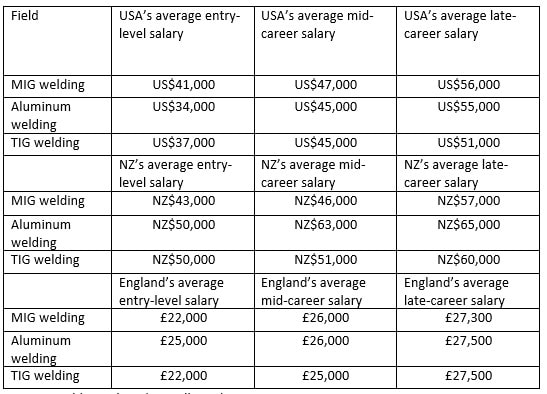
Average welding salary data collected via https://www.payscale.com/
Overall
As you can see, welding is a great career choice for those who love a bit of heat and getting their hands dirty. Even pen clickers in suits can enjoy the fine craft of stainless TIG welding. It’s not for everyone, but those who are willing to learn how to become a professional welder and embrace it, will love it.
Consider jumping in yourself to set a path for endless opportunities in a range of fields.
Featured image credit: Airman 1st Class Colby Hardin, McConnell Air Force Base
